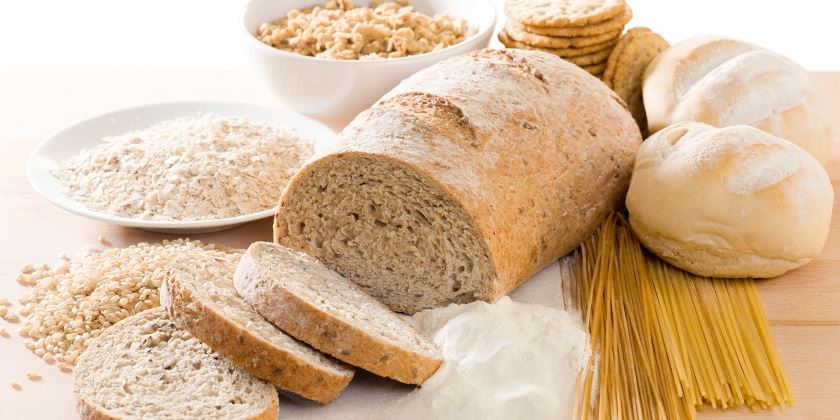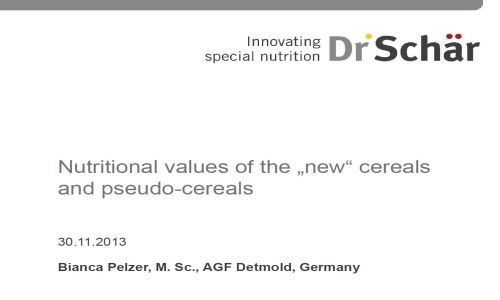What is gluten?

Gluten is found in many cereals, such as wheat, spelt, rye and barley, and serves as a storage protein for plants. In coeliac disease patients, however, it triggers an inflammatory response, leading to intestinal damage. Even traces of gluten are toxic.
Gluten is the generic term used for the family of storage proteins found in wheat rye and barley. Gluten proteins are found, conjoined with starch, in the endosperm of the grain seed. They make up approximately 5 - 10% by weight of the dry grain matter and thus around 80% of the total grain protein. Gluten is an adhesive protein and has various food-technological properties. Gluten itself has a low nutritional value, but is a good emulsifier and flavour carrier; it gels, binds water and acts as a stabiliser. Gluten is therefore versatile when used in convenience foods and sauces, as well as an additive in food technology.
Gluten is soluble in alcohol and can be divided into prolamins and glutelins. Wheat prolamins are called gliadins, while wheat glutelins are called glutenins.
Gluten is soluble in alcohol and can be divided into prolamins and glutelins. Wheat prolamins are called gliadins, while wheat glutelins are called glutenins.
Only prolamins, the alcohol-soluble protein fractions of the following grains, are toxic to persons with coeliac disease:
- Wheat (gliadin)
- Barley (hordein)
- Rye (secalin)
- Oats (avenin)
- Botanically related species, e.g. as spelt, green spelt, kamut, emmer and einkorn
Digestion of prolamins
Prolamins are rich in proline and glutamine, two amino acids that are difficult to digest. Neither proline or glutamine are classified as essential amino acids. It is the high proline and glutamine content in gluten that prevents the proteins from being completely broken down by the digestive enzymes. The long-term result of this is that toxic oligopeptides, proteins with up to ten amino acids, are present in the small intestine. Proline is degraded using an oxidase, which converts proline into glutamic acid using glutamate-gamma-semialdehyde. The glutamic acid in turn must be converted into glutamine, so that it can be transported to the brain, where it is necessary for protein synthesis.
Oats
The prolamin found in oats (known as avenin) is not believed to be toxic to the majority of coeliac patients. However, there is a high risk that standard oat products may be contaminated with gluten and should be avoided. Current advice from the National Institute of Clinical Excellence states that patients can choose to include gluten free oats in their diet at any stage and will be advised whether to continue eating gluten free oats depending on their immunological, clinical or histological response [1].
References
- NICE Guideline NG20: Recognition, Assessment & Management of Coeliac Disease. National Institute of Clinical Excellence 2015.
Other chapters in the field of gluten-free diet:
Further information on this topic
Presentations
1
Show all

Nutritional values of the „new“ cereals and pseudocereals (2013)
Bianca Pelzer
Association of Cereal Research (AGF)
Detmold, Germany
International Symposium "10 years of research in gluten-free food and future prospects", 30.11.2013, AREA Science Park, Trieste (Italy)
Association of Cereal Research (AGF)
Detmold, Germany
International Symposium "10 years of research in gluten-free food and future prospects", 30.11.2013, AREA Science Park, Trieste (Italy)

Nutritional values of the „new“ cereals and pseudocereals (2013)
Bianca Pelzer
Association of Cereal Research (AGF)
Detmold, Germany
...
www.drschaer-institute.com
